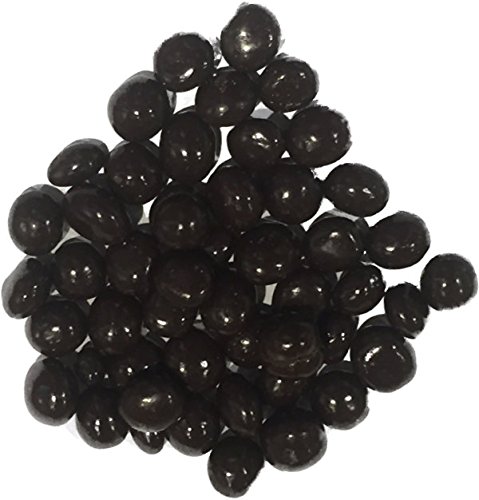Which Coffee Beans Are the Best?
When it comes to finding a great cup of coffee, the type of beans you choose can make the difference. Each one has a distinct flavor that is complemented by a wide range of food and drink recipes.
Panama leads the pack with their exclusive Geisha beans that score highly in cupping tests and are priced high at auction. Ethiopia, and especially Yirgacheffe bean isn't far behind.
1. Geisha Beans from Panama
Geisha beans are among the top coffee beans available anywhere in the world. Geisha beans are prized for their distinctive flavor and aroma. These rare beans, grown at high altitudes, undergo an unusual process that gives them their distinctive flavor. The result is a cup with a rich, smooth flavor.
The Geisha coffee plant is native to Ethiopia, but was first introduced to Panama in 1963. Geisha coffee has been proven to be a winner in competitions due to its taste and prestige. Geisha beans can be expensive due to the amount of labor needed to grow them. Geisha coffee plants are more difficult to grow because they require higher elevations and special climate conditions.
Geisha beans are delicate and must be handled with care. They must be carefully sorted and meticulously prepared prior to roasting. Otherwise, they may turn bitter and acidic.
The beans are grown at the Janson Coffee Farm, which is located in Volcan, Panama. The farm is focused on quality production and is committed to improving the environment. They utilize solar panels for energy, repurpose water and waste materials, and employ enzyme microbes to improve soil. They also reforest the area and make use of recycled water to wash. The coffee they produce is a Washed Geisha and was awarded the highest score at a Panama Coffee Competition.
2. Ethiopian Coffee
Ethiopia is a giant in the field of coffee with a long and rich history of producing the best drinks in the world. Ethiopia is the 5th largest producer of coffee in the world. Their beans are highly valued for their unique fresh, fruity and floral flavors. Ethiopians unlike other beans, taste best when roasting to medium-low. This lets the delicate floral notes to be retained while highlighting their fruity and citrus flavors.
Sidamo beans, famous for their crisp acidity and crisp acidity, are among the top in the world. However, other coffees, such as Yirgacheffe or Harar are equally well-respected. Harar is among the most famous and oldest varieties of Ethiopian coffee and it comes with distinct mocha and wine flavor profile. Coffees from the Guji zone are also well-known for their distinct terroirs and complex flavors.
Natural Process is a different type of Ethiopian coffee made by dry-processing, instead of wet processing. The difference between the two methods is that wet-processing involves washing coffee beans, which can remove some of the fruity and sweet flavor of the bean. Natural Ethiopian coffees that were processed were not as popular as the washed counterparts. They were used more to brighten blends rather than being those sold on the specialty market. Recent technological advances have resulted in higher-quality natural Ethiopians.
3. Brazilian Coffee

Brazilian Coffee is a rich mixture of different types. It is known for having an acidity that is low. It has sweet, mellow flavors and the hint of chocolate. The flavors vary based on the state and region in which it is grown. It is also well-known for its citrus and nuts notes. It is a good choice for those who like medium-bodied coffee.
Brazil is the world's biggest coffee producer and exporter. Brazil is the largest producer of more than 30 percent of the world's coffee beans. Brazil's economy is heavily reliant from this vast agricultural industry. Brazil has a climate that is perfect for growing coffee, and there are fourteen major coffee-producing regions.
Catuai beans, Mundo Novo beans, Obata beans and Icatu are the primary beans used for Brazilian coffee. These are all varieties of Arabica coffee. There are also a lot of hybrids that include Robusta. Robusta is the name of a coffee bean that originated in Sub-Saharan Africa. It's not as flavorful and aromatic as Arabica, but it's more easy to cultivate.
It is important to remember that slavery is a reality in the coffee industry. Slaves are subjected in Brazil to exhausting and long work hours, and are often denied adequate housing. The government has taken measures to address the issue and has instituted programs to help coffee farmers pay their debts.
4. Indonesian Coffee
The best coffee beans from Indonesia are renowned for their dark, strong flavor and earthy flavor. The volcanic ash mixed into the soil gives them a firm body and low acidity, which make them ideal for blending with higher-acidity beans from Central America and East Africa. They also take well to darker roasting. coffee beans online are smoky and complex in taste, with flavors of leather, wood tobacco, and ripe fruit.
Java and Sumatra are the two largest coffee producing areas in Indonesia, however some coffee is also produced on Sulawesi and Bali. A lot of farms in these regions utilize a wet-hulling process. This is different from the washed process utilized in the majority of the world. Coffee cherries are pulverized and then washed and dried. The hulling process reduces the amount of water present in the coffee that can reduce the effect of rain on the final product.
Mandheling is among the best-known and highest-quality varieties from Indonesia. It is from Toraja. It is a rich and full-bodied coffee with hints of candied fruits and a smoky taste of chocolate. Other types of coffee from this region are Gayo and Lintong. These are generally wet-hulled, and have a full and smoky flavor.
